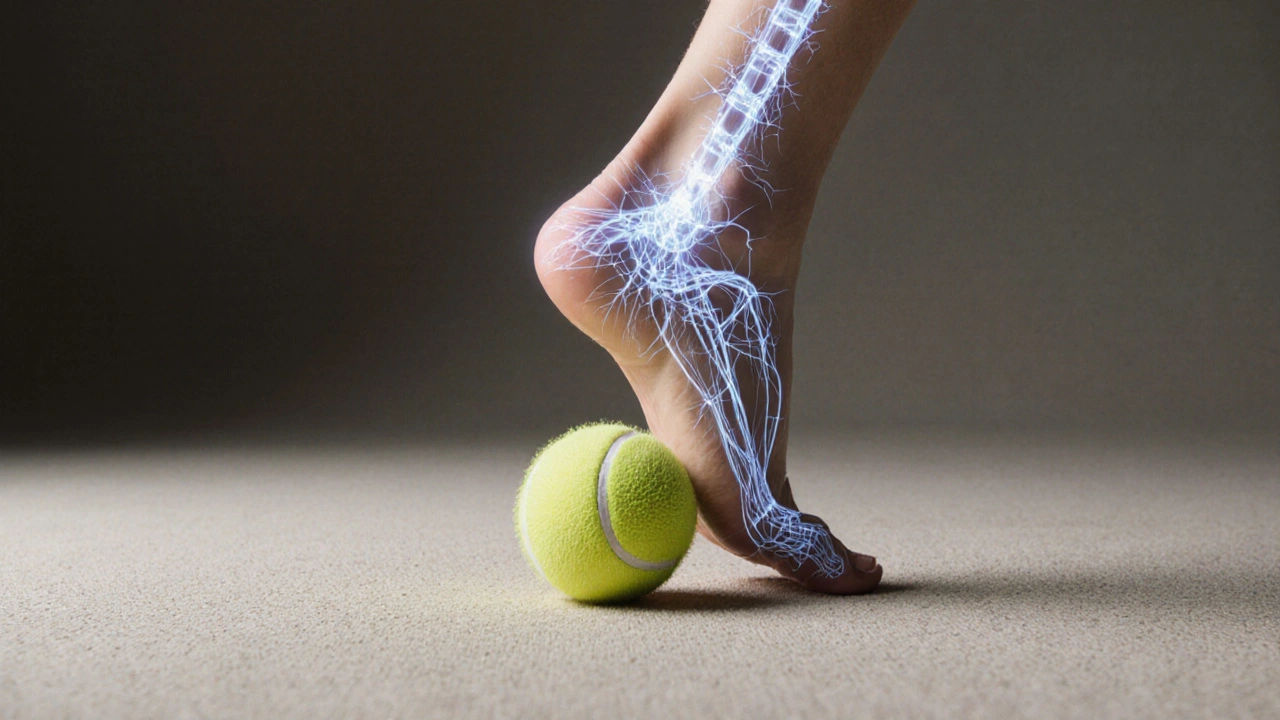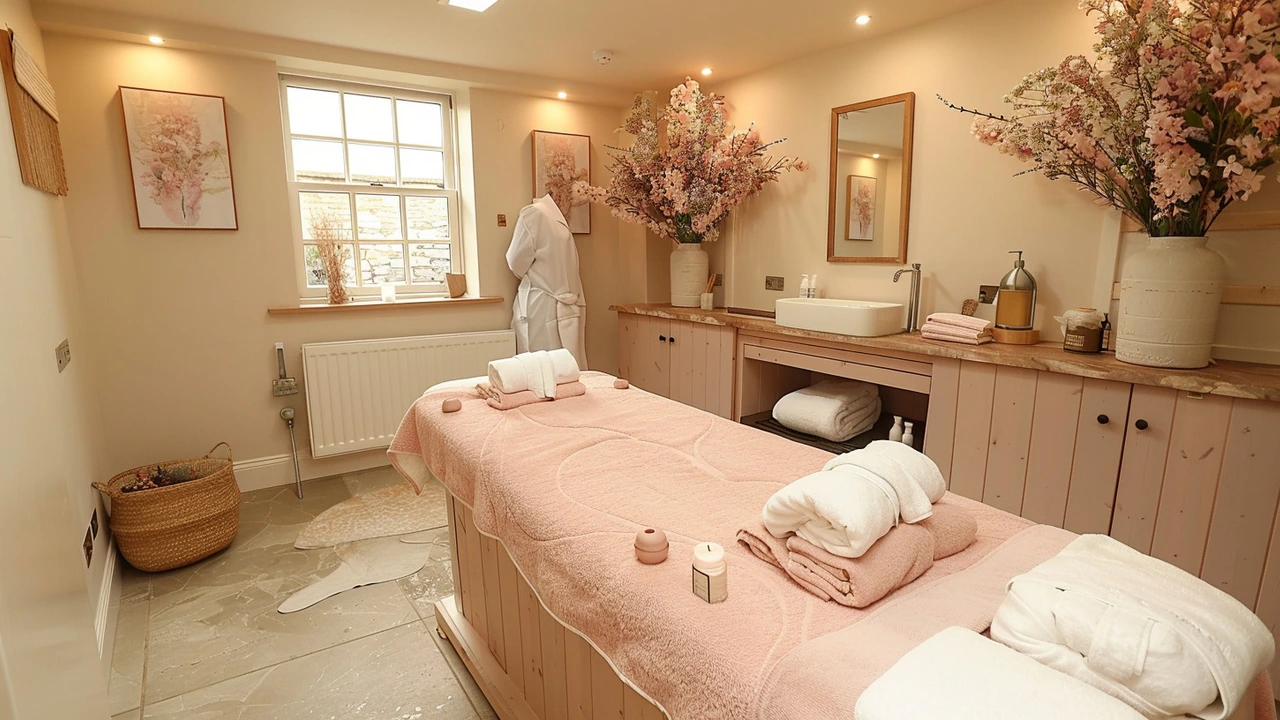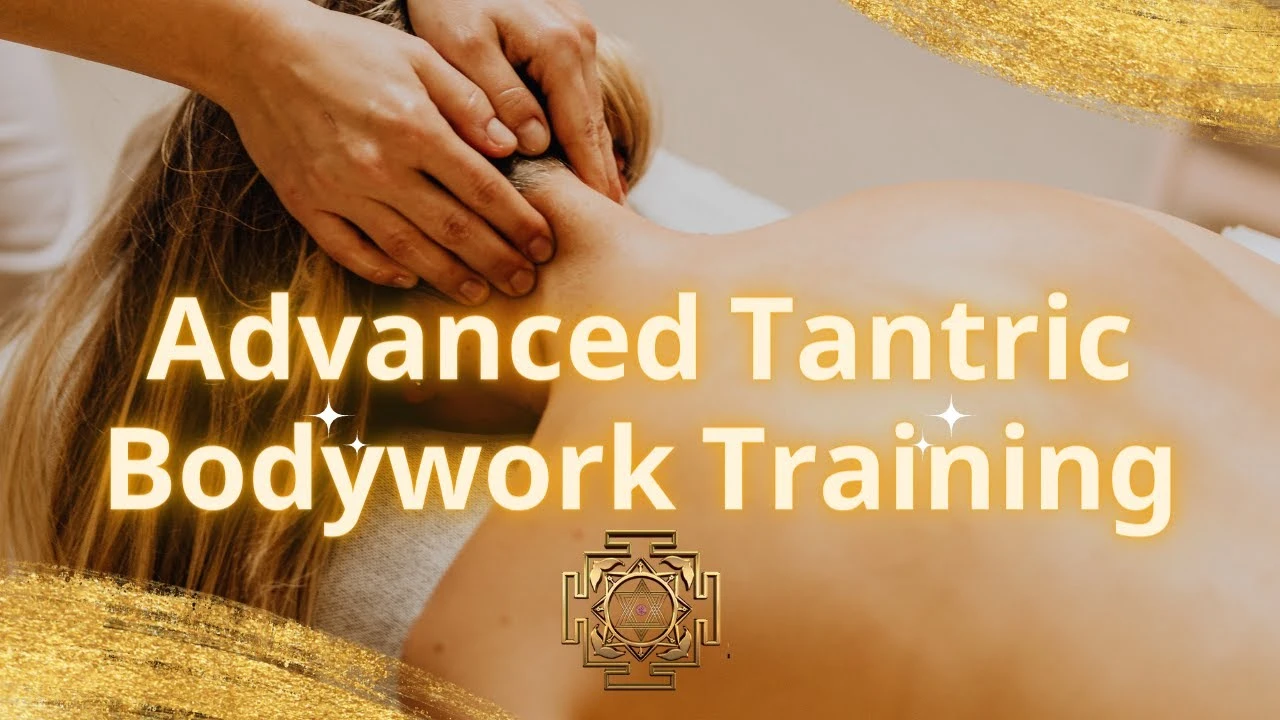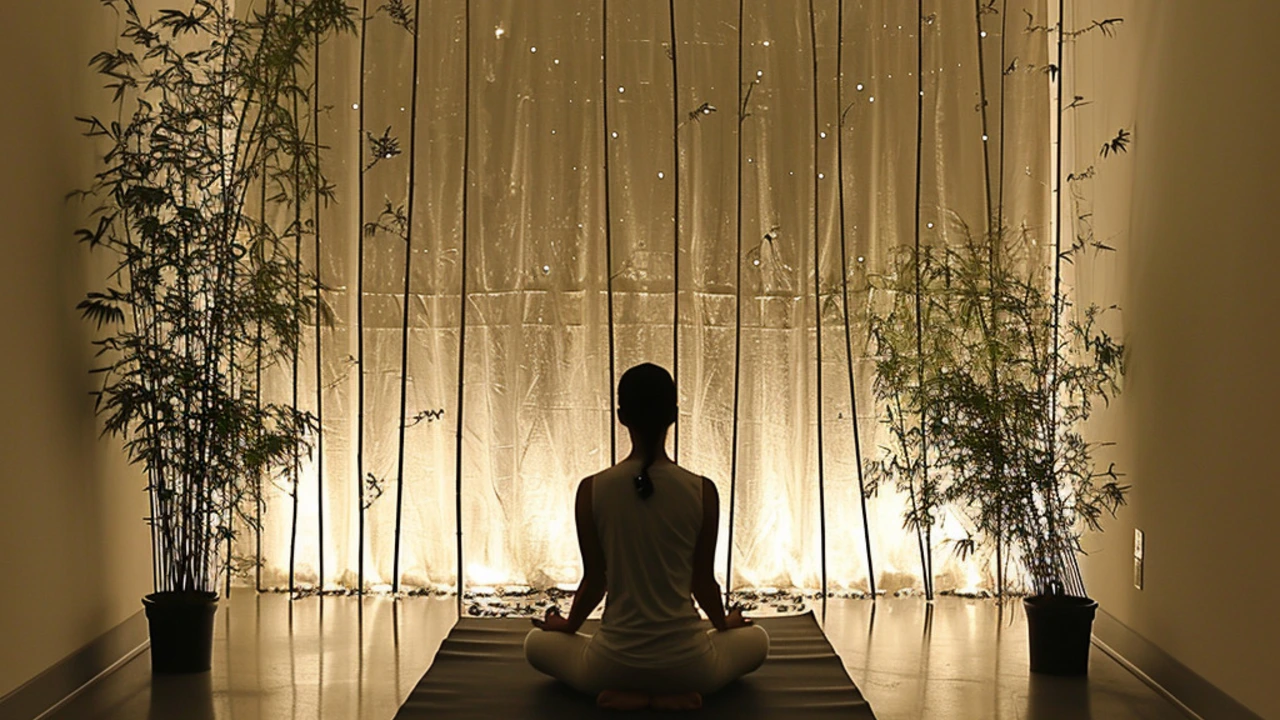Improve Your Posture with Fascia Stretching: A Step-by-Step Guide

Fascia Stretch Timer
How to Use This Timer
Follow the article's 4-Step Method:
1. Start slow • 2. Hold for 2 minutes • 3. Move microscopically • 4. Repeat both sides
Slouching at your desk, hunching over your phone, or feeling stiff after sitting all day? You’re not just tired-you’re holding tension in your fascia. This invisible web of connective tissue wraps around every muscle, bone, and organ in your body. When it gets tight or stuck, your posture suffers. And no amount of shoulder rolls or back stretches will fix it if you’re ignoring the fascia.
Fascia stretching isn’t about pulling muscles. It’s about releasing the glue-like tissue that’s holding you in bad positions. Think of it like untangling a knotted rope. You don’t yank the ends-you gently work the knots loose. And when you do, your body remembers how to stand tall.
What Is Fascia and Why Does It Matter for Posture?
Fascia is a continuous network of collagen and elastin fibers that acts like a full-body suit. It connects your toes to your skull. It holds your spine in alignment. It lets your shoulders rotate smoothly. When healthy, fascia is slippery and flexible. But when you sit too long, move poorly, or get injured, it dries out, sticks together, and forms adhesions.
These adhesions pull your skeleton out of balance. Your head leans forward. Your shoulders roll inward. Your hips tilt. Your lower back arches. All of it starts with fascia. And the good news? You can reverse it-not with strength training alone, but with targeted, slow stretching.
Studies from the Journal of Bodywork and Movement Therapies show that people who practiced fascia-focused stretching for just 10 minutes a day saw measurable improvements in spinal alignment and reduced neck pain within four weeks. No machines. No expensive tools. Just your body and time.
Why Regular Stretching Doesn’t Fix Posture
You’ve probably tried touching your toes, doing cat-cow, or hanging from a bar. These moves help-but they don’t fix the root problem. Why? Because most stretches target muscles, not fascia.
Muscles contract and relax quickly. Fascia responds slowly. It needs sustained pressure and gentle movement over time. If you bounce in a stretch or hold it for only 15 seconds, you’re not reaching the fascia. You’re just warming up the muscle.
Think of it like this: if your shoelace is knotted, you don’t yank it. You pull each loop slowly until it loosens. Fascia works the same way. It takes 90 to 120 seconds of steady, gentle pressure to start releasing. That’s why foam rolling for 30 seconds doesn’t cut it. You need patience.
How to Stretch Fascia: The 4-Step Method
Fascia stretching isn’t about intensity. It’s about awareness. Here’s how to do it right.
- Start slow. Move into each stretch gently. No forcing. No pain. You should feel a mild pull, not a burn.
- Hold for 2 minutes. Set a timer. Most people quit at 30 seconds. That’s not enough. Stay still. Breathe deeply. Let your body sink into the stretch.
- Move microscopically. While holding, wiggle your fingers, shift your weight slightly, or roll your shoulders. Tiny movements help break up adhesions.
- Repeat on both sides. Fascia doesn’t care if you’re left-handed. It holds tension evenly. Always stretch both sides, even if one side feels tighter.
Do this routine 3-4 times a week. You don’t need to do all the moves at once. Pick two and stick with them for a week before adding more.

Best Fascia Stretches for Posture
These five stretches target the most common posture killers: tight chest, rounded shoulders, forward head, and tight hips.
1. Thoracic Spine Roll (For Rounded Shoulders)
Grab a foam roller or a tightly rolled towel. Lie on your back with the roller under your upper back, just below your shoulder blades. Keep your knees bent, feet flat. Cross your arms over your chest. Slowly roll up and down a few inches, pausing for 2 minutes on any spot that feels stiff. Breathe into the tightness. If you feel a knot, stay there. Let your body melt.
2. Doorway Chest Stretch (For Forward Head)
Stand in a doorway. Place your forearms on the frame, elbows at shoulder height. Step one foot forward until you feel a stretch across your chest and front shoulders. Don’t push. Just stand there. Breathe. Hold for 2 minutes. If you can’t reach the doorway, use a wall. Same idea.
3. Hip Flexor Release (For Tilted Hips)
Kneel on one knee, the other foot flat in front of you. Tuck your tailbone under slightly. Shift your weight forward until you feel a deep stretch in the front of your hip. Don’t arch your lower back. Keep your core soft. Hold for 2 minutes. Switch sides. This one’s a game-changer for people who sit all day.
4. Thread the Needle (For Upper Back and Neck)
Start on all fours. Slide your right arm under your left arm, palm up. Let your right shoulder and temple rest on the floor. Extend your left arm out in front. Breathe. Feel the stretch along your upper back and neck. Hold for 2 minutes. Repeat on the other side.
5. Foot Fascia Roll (For Whole-Body Alignment)
Most people forget their feet. But your feet are the foundation. Roll the sole of each foot over a tennis ball or a frozen water bottle for 2 minutes. Apply light pressure. Move slowly. This releases tension that travels all the way up to your spine.
What to Avoid When Stretching Fascia
It’s easy to go too hard. Here’s what not to do:
- Don’t bounce. Bouncing causes micro-tears and makes fascia tighten up more.
- Don’t hold your breath. Breathing tells your nervous system it’s safe to relax. If you’re holding your breath, you’re still in fight-or-flight mode.
- Don’t stretch cold muscles. Do a quick 3-minute walk or arm circles first. Warm tissue releases better.
- Don’t expect overnight results. Fascia changes slowly. Think months, not days. But the first week? You’ll feel lighter. That’s the start.

How to Make It Stick
Consistency beats intensity every time. Here’s how to build a habit:
- Do your stretches right after your morning coffee or before bed.
- Set a phone reminder labeled “Posture Reset.”
- Pair it with something you already do-like brushing your teeth or checking your email.
- Track it on a calendar. Mark an X for each day you do it. Don’t break the chain.
After 3 weeks, you’ll notice you stand taller without thinking. Your shoulders won’t feel like they’re carrying bricks. Your neck won’t ache after 10 minutes on your phone. That’s not magic. That’s fascia coming back to life.
When to See a Professional
Fascia stretching works for most people. But if you have chronic pain, numbness, or tingling in your arms or legs, or if you’ve had surgery or injury, talk to a physical therapist trained in myofascial release. They can identify stuck areas you can’t reach on your own.
Also, if you’ve been stretching for 6 weeks and see no change, you might need more than stretching. You might need movement retraining-how to sit, stand, and walk without compensating. That’s where a good movement coach comes in.
But for 90% of people? The fix is simpler than you think. You don’t need a gym membership. You don’t need expensive equipment. Just 10 minutes a day, focused on your fascia, and your posture will start to heal itself.
How long does it take to see results from fascia stretching for posture?
Most people feel lighter and more aligned after just one session. Noticeable posture improvements-like standing taller without effort-typically show up within 2 to 4 weeks with consistent daily stretching. Full structural changes take 8 to 12 weeks, because fascia rebuilds slowly.
Can I use a foam roller for fascia stretching?
Yes, but only for certain areas like the back, hips, and calves. Foam rolling is great for applying pressure, but it’s not a substitute for slow, static stretching. For areas like the chest, neck, and feet, use bodyweight stretches instead. Rolling is a tool, not the whole method.
Is fascia stretching the same as yoga?
Not exactly. Yoga includes fascia stretching, but it also focuses on strength, balance, and breath control. Fascia stretching is more targeted: it’s about holding still for 2 minutes to release connective tissue. You can do fascia stretches without doing yoga. But yoga practitioners often get better posture because they naturally incorporate these principles.
Do I need special equipment for fascia stretching?
No. You can do all the key stretches with just a towel, a tennis ball, and a doorway. Foam rollers help, but they’re optional. The most important tool is your attention. If you’re focused and patient, your body will respond.
Can fascia stretching help with back pain?
Yes, especially if the pain comes from poor posture. Tight fascia in the hips, chest, or feet pulls the spine out of alignment, which strains the lower back. Releasing those areas often reduces or eliminates back pain without medication or injections. But if pain is sharp, radiating, or constant, see a professional.
Next Steps
Start today. Pick one stretch-the doorway chest stretch or the foot roll-and do it for 2 minutes right now. Then do it again tomorrow. In a week, you’ll wonder why no one told you this sooner. Your body has been waiting for you to listen. It’s not broken. It’s just stuck. And now, you know how to undo it.





